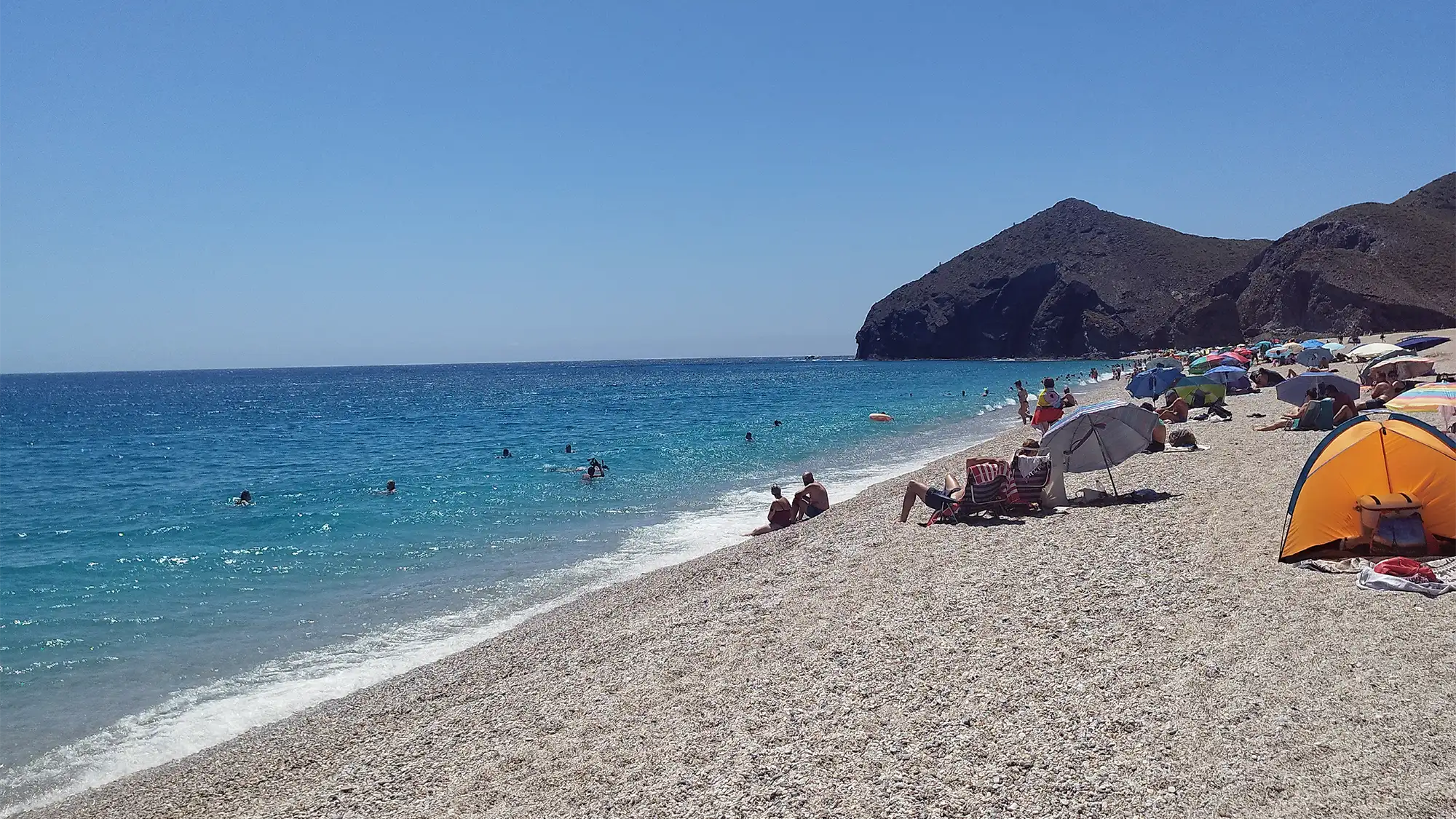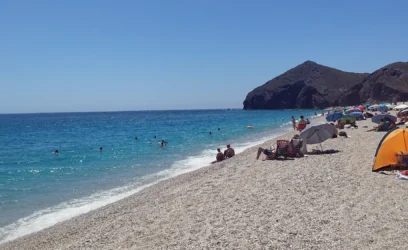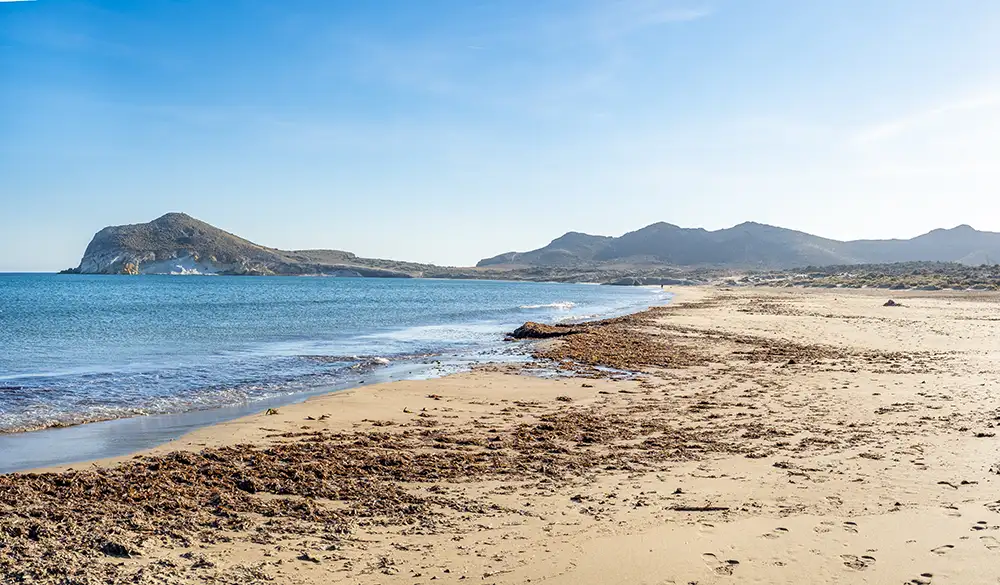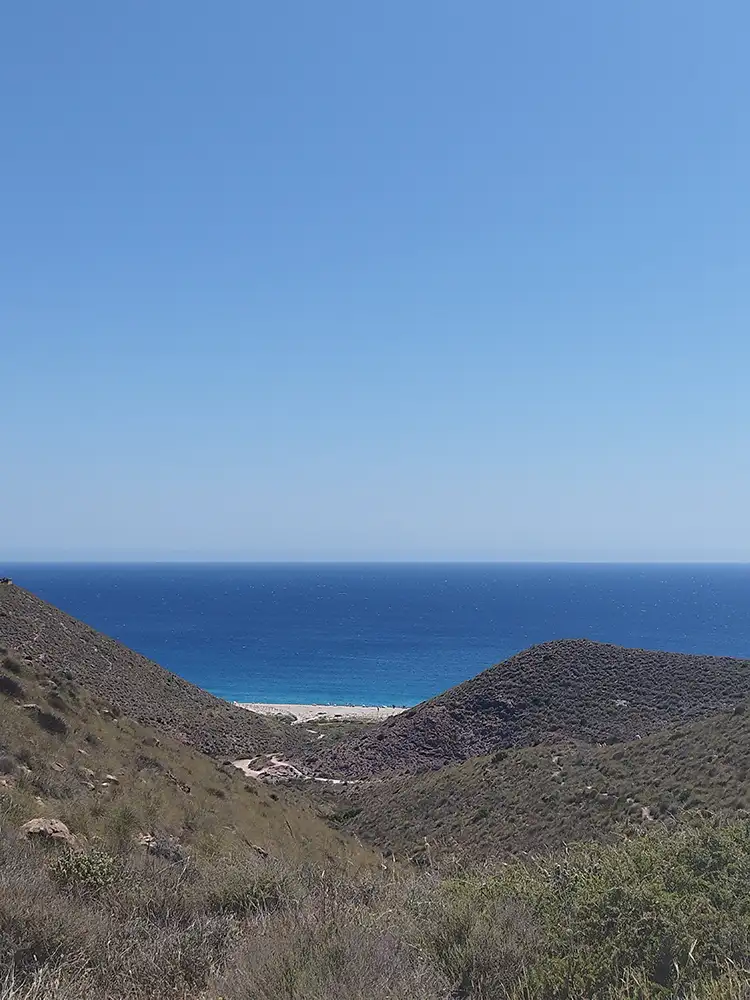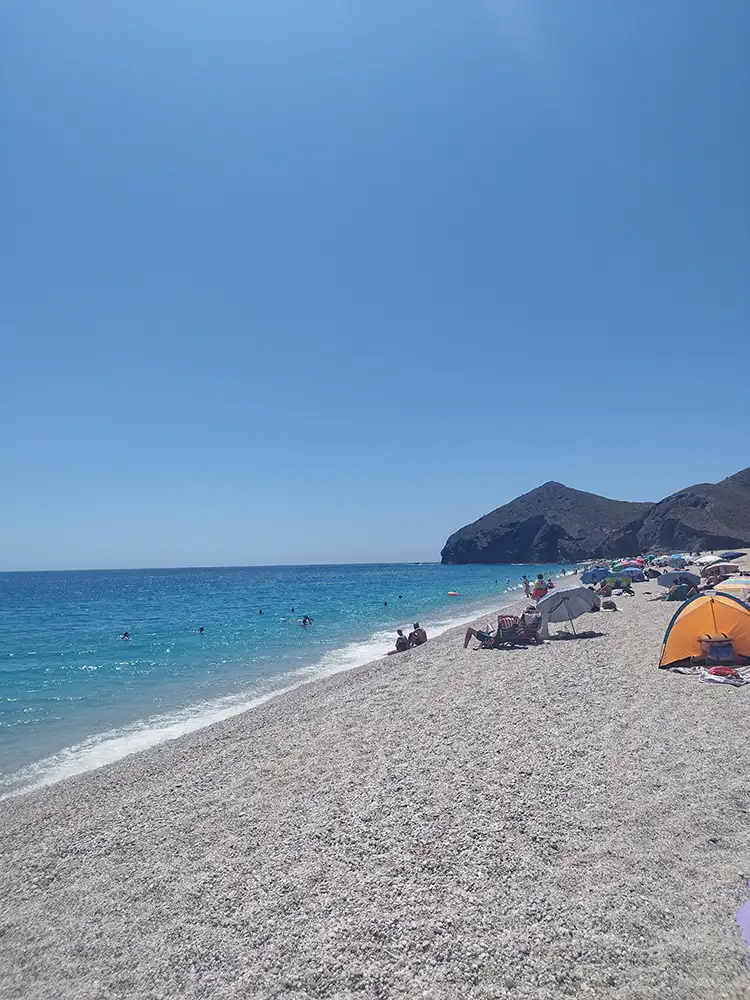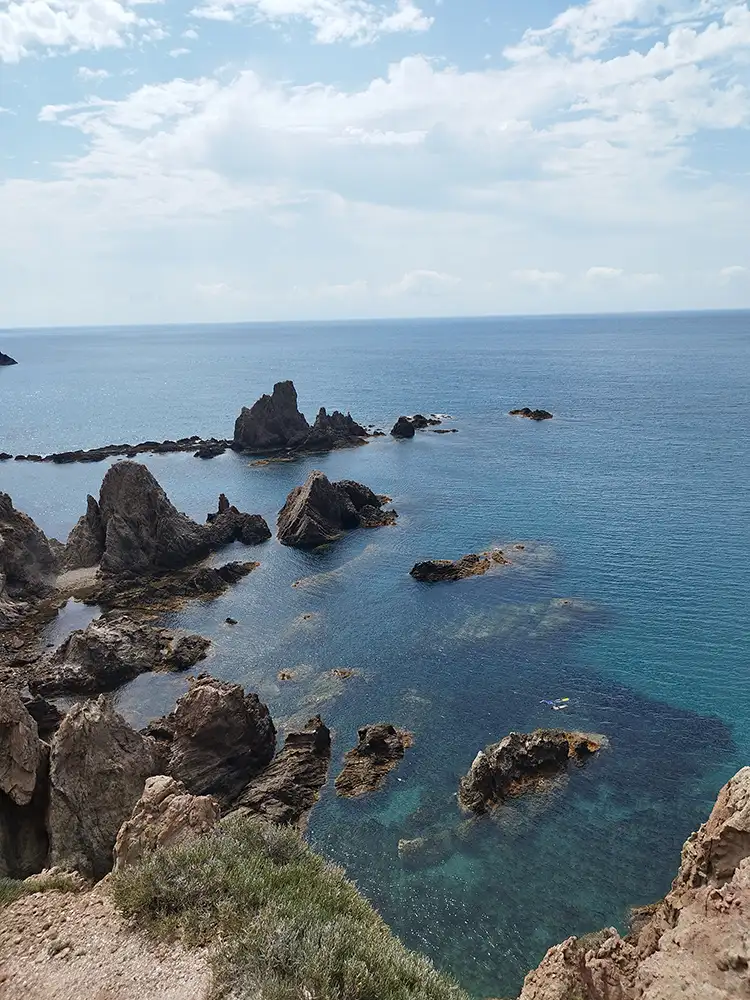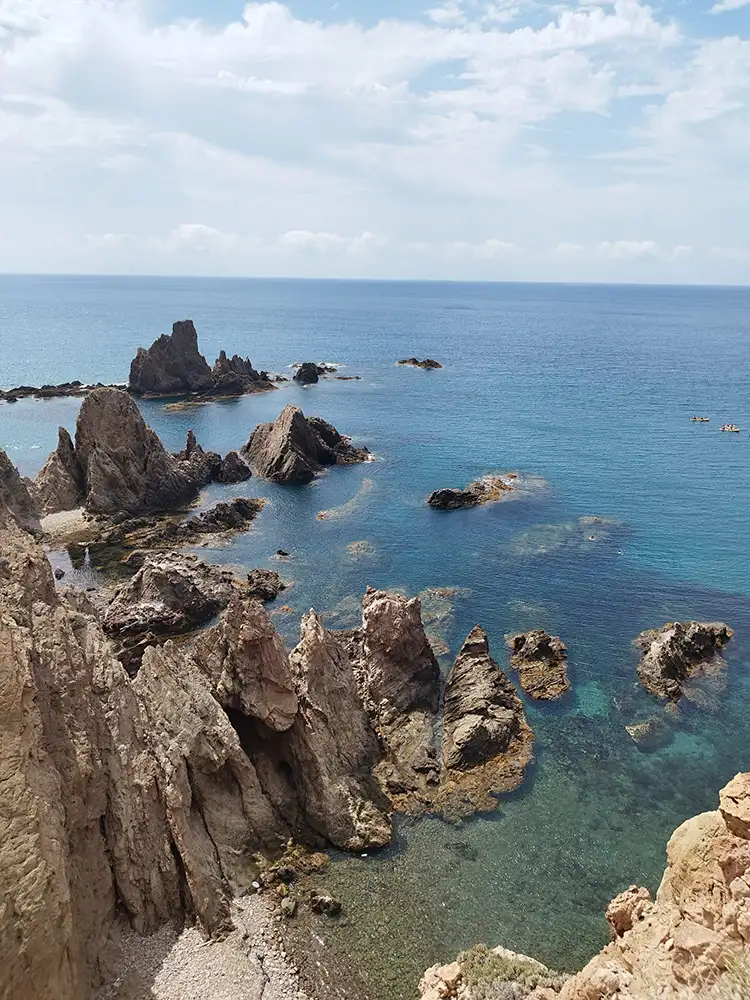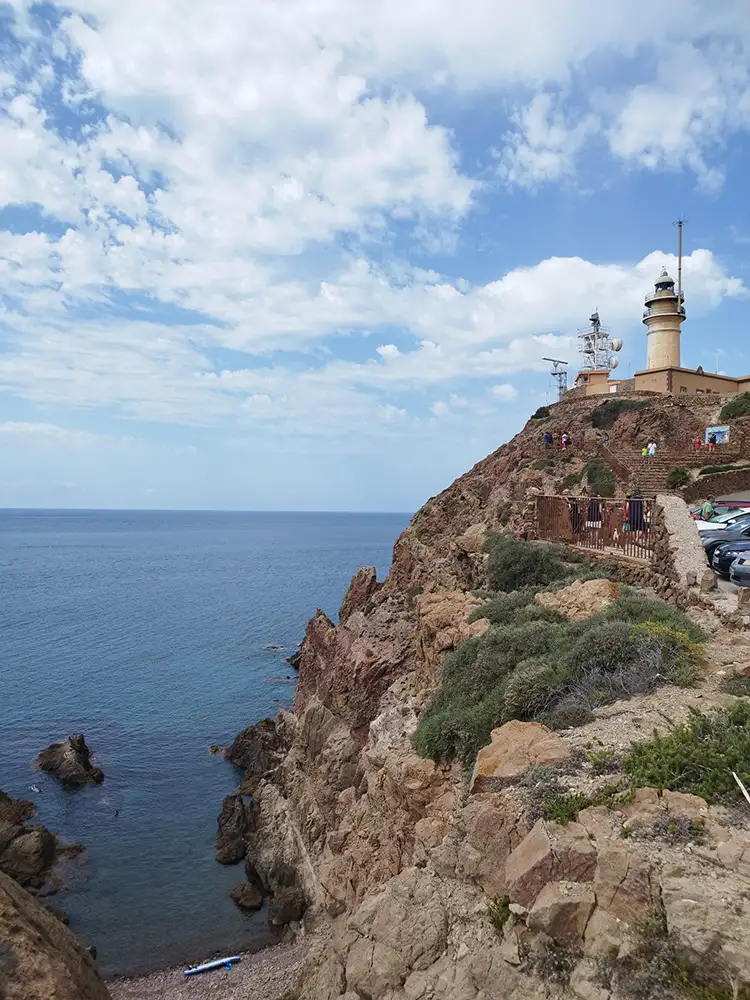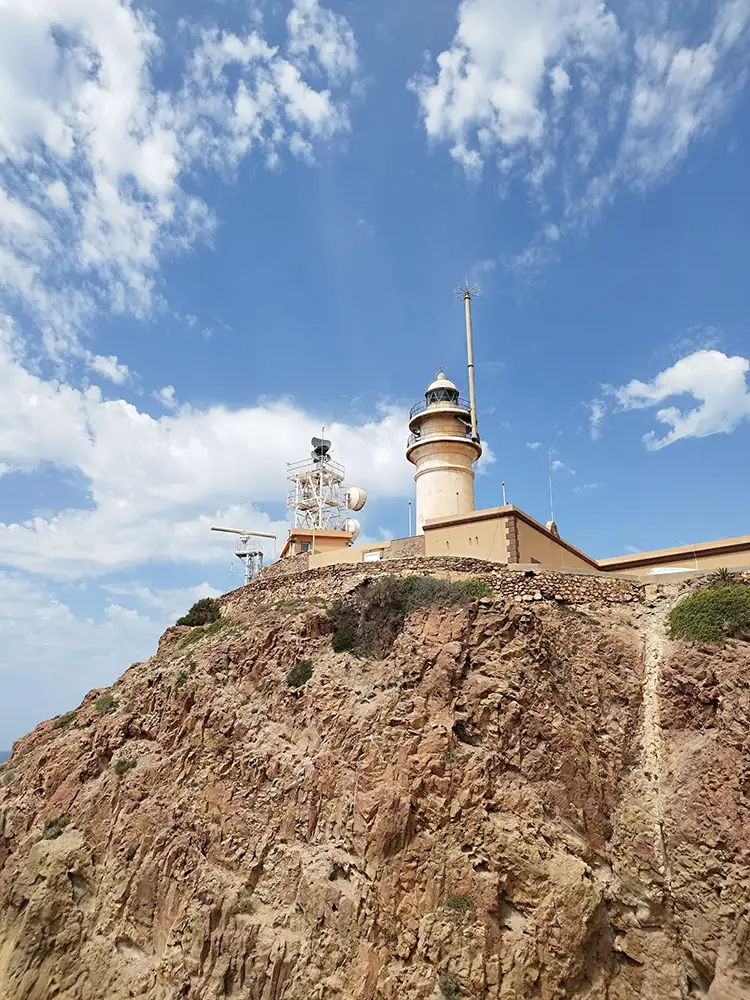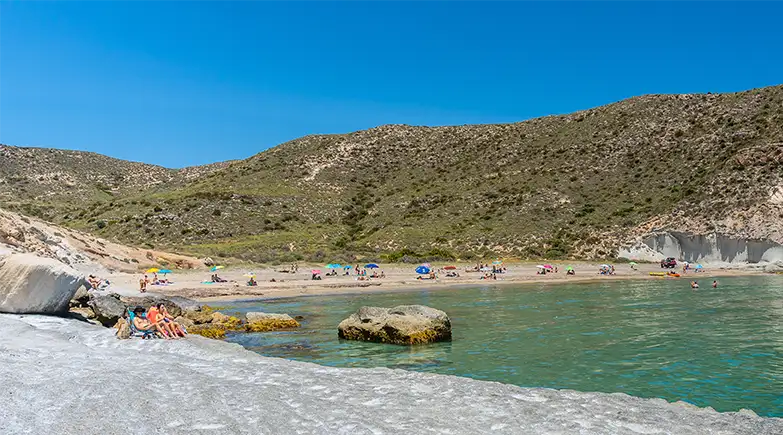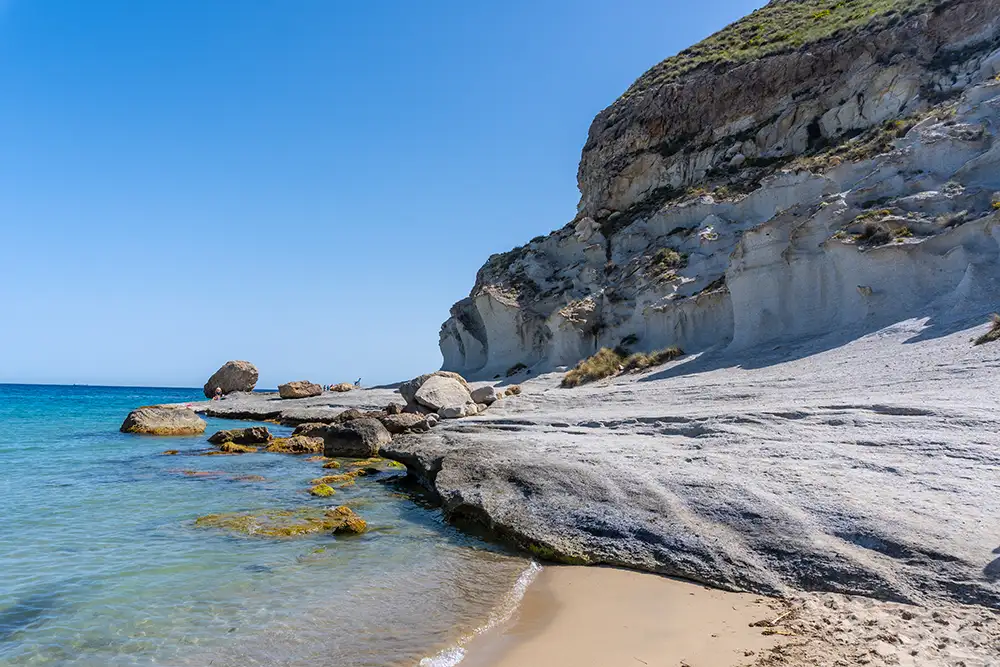Cabo de Gata in Almería is a true natural wonder. Dramatic landscapes, unspoilt beaches and a timeless atmosphere make it the perfect escape. Forget the crowds and heavy tourist infrastructure: here, the sea is crystal-clear, the rock formations look like sculptures, and the sunsets are simply unforgettable. It’s a destination for those who love to explore, unwind and appreciate the simple pleasures of life by the sea.
How to Get to Cabo de Gata
Cabo de Gata is located in the province of Almería, in the south-east of Spain. Depending on where you are travelling from, there are a few ways to reach the area. Here’s how to plan your journey to Almería.
By car
If you are in Almería and want to drive to Cabo de Gata, the journey is straightforward and takes around 30 to 40 minutes. The route is well signposted and offers beautiful desert landscapes along the way.
However, be aware that some secondary roads may be unpaved, so drive carefully if you are in a standard car. Make sure your GPS is up to date and avoid speeding (missing a turn or getting a €200 fine is easier than you might think!).
- Take the AL-12 motorway towards the airport.
- Continue on the N-344, which connects the city of Almería to the Cabo de Gata-Níjar Natural Park.
- Depending on your final destination within the park, you can either continue on the AL-3115, which leads directly to the village of Cabo de Gata, or take secondary roads towards San José and other iconic beaches.
By bus
If you are in Almería and want to visit the Cabo de Gata region by public transport, there are two options departing from the Estación Intermodal de Almería. Both options cost approximately €2 to €3 per journey:
- To the village of Cabo de Gata: The M-202 line takes you to the village of Cabo de Gata. The journey takes around one hour and is a good option for visiting the village itself and the Las Salinas area. However, to explore the park’s most famous beaches, such as Genoveses Beach and Mónsul Beach, you will need a car or a taxi.
- To the village of San José: The best base for exploring the main beaches of Cabo de Gata Natural Park is San José. To get there, take the M-212 (Almería–La Isleta del Moro) line.
During the summer months (from July to September), a special beach bus operates from San José, connecting the main beaches. The service runs from 10:30 am to 8:00 pm, with departures every hour. Tickets cost €3 return or €2 for a single journey between beaches. For those used to cycling on trails, hiring a bike can also be a good option for reaching Genoveses Beach and, with a bit more effort, Mónsul Beach.
Things to Do in Cabo de Gata
Genoveses Beach
One of the most beautiful and unspoilt beaches in Cabo de Gata.
There are no buildings here, just you, the golden sand and the relentless sun. The beach stretches for over one kilometre, surrounded by small dunes and a picturesque hill in the background.
Praia de los Muertos
Despite its macabre name, it is one of the most impressive beaches you will find. You will need to walk down a hill to access the beach, but it is well worth it. The beach stretches for over one kilometre in a straight line, with phenomenal blue waters. It is consistently ranked among the most beautiful beaches in Spain.
Mónsul Beach



So cinematic that even Spielberg chose it for Indiana Jones. If he approved it, who are we to disagree? It was selected as a location for famous films such as Raiders of the Lost Ark, The Adventures of Baron Munchausen, Lawrence of Arabia and The Man Who Lost His Shadow.
Arrecife de las Sirenas
Impressive rock formations that look as if they were designed by an artist who enjoys challenging the laws of physics. The name was given because it is said that this area was once home to many monk seals, whose cries sailors mistook for the songs of mermaids.
San José

The main village, with bars and restaurants for those needing a break between one beach and another. It is also a good spot for water sports.
Cala San Pedro

For adventurous visitors, this beach is only accessible by trail or by boat from Las Negras, but it is well worth the effort. In the cove, there is a freshwater spring and an 18th-century fortification. You will also find some areas dedicated to nudism and naturism.
Fun Facts About Cabo de Gata
- The region is one of the driest areas in Europe and features landscapes reminiscent of the Arizona desert.
- It has been used as the backdrop for several westerns and major Hollywood productions.
- The name “Cabo de Gata” comes from the presence of agate mines in the region, not from cats (“gato” in Spanish), although you might still spot a few around!.
- The marine biodiversity is incredible, making it a paradise for divers and snorkellers.
What to Pack? (The list that will save your skin)
- Sun cream: The sun here is relentless. Remember to reapply regularly.
- Beach umbrella: It is a very dry area, so natural shade is hard to find. Bring your own.
- Flip-flops and comfortable trainers: You will be walking quite a lot, as most beaches are a bit remote.
- Food and water: Some beaches are fairly isolated, so bring snacks if you don’t want to rely on the breeze. A cooler is almost essential.
- Camera: Or a mobile phone with plenty of storage, because you will want to capture every corner.

Conclusion: Is It Worth Visiting?
Surreal landscapes, paradise beaches and a climate straight out of a western film. Cabo de Gata brings it all together.
If you prefer crowded resorts, shopping centres and constant Wi-Fi, you might want to think twice. But one thing is certain: once you visit this paradise, you will definitely want to return. And don’t say I didn’t warn you!

